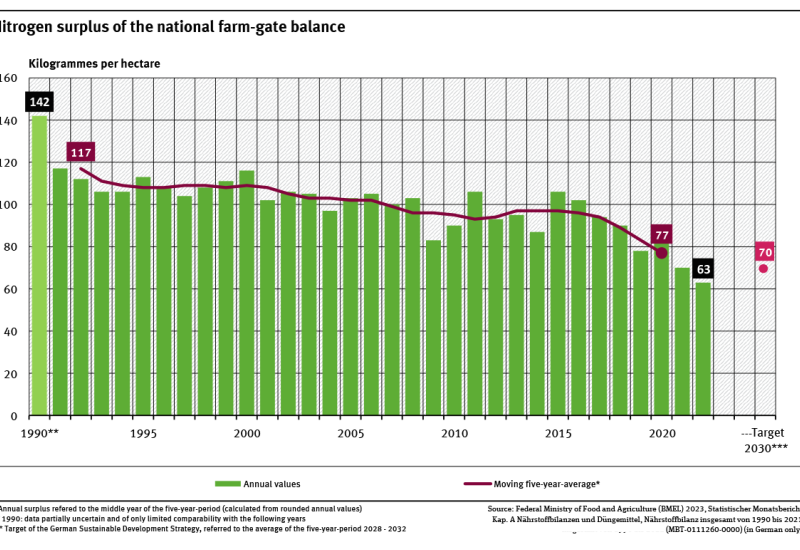Maps are created/updated using CL data from the NFC. read more
acidification
Air
Reactive nitrogen
Reactive nitrogen, unlike nonreactive molecular nitrogen (N2), is in a great many organic and inorganic substance compounds and of vital importance to all life processes. The availability of reactive nitrogen often limits plant growth, which is why sufficient supply of reactive nitrogen is so important in food production. If excessive amounts of reactive nitrogen are deposited to the environment,... read more
Agriculture
Ammonia, dust and odour emissions
Intensive livestock farming is a key agricultural sector in Germany, but one that unfortunately generates ammonia emissions, odours and dust that are hazardous to the environment and a nuisance to persons living in close proximity to livestock farms. read more
Umwelt-Indikator
Indicator: Agricultural nitrogen surplus
The five-year average of nitrogen surplus of the total balance per hectare of utilized agricultural land has decreased by 34 % since 1992.The Federal Government aims to reduce the average nitrogen surplus of the total balance of the years 2028 to 2032 to 70 kilogrammes per hectare of agricultural land.If the trend of the last 10 years continues, the target will be reached. read more





